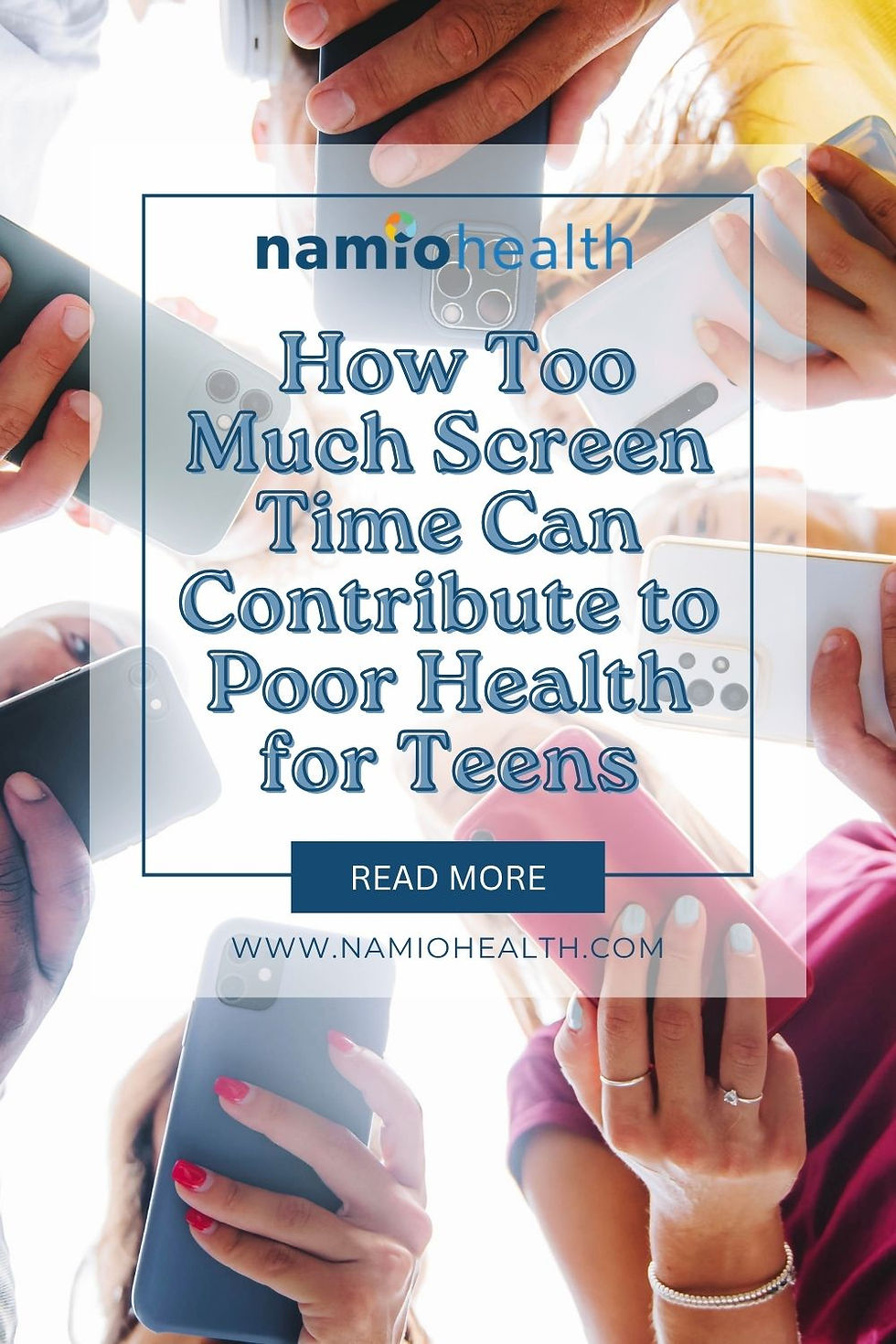The Sleep–Screen Time Trap: Breaking the Cycle for Better Teen Health
- Cassandra Padgett

- Sep 22
- 3 min read
Between school demands, social lives, and constant digital access, it’s no surprise that today’s teens are struggling to get enough sleep. But one of the biggest culprits? Screen time.
According to the American Academy of Pediatrics (AAP) and Centers for Disease Control and Prevention (CDC), excess screen use — especially before bed — can directly interfere with a teen’s ability to fall and stay asleep. And when teens don’t sleep well, they’re more likely to turn to screens during the day to cope with fatigue.
This creates a frustrating cycle:
More screen time → Less sleep → More screen time to get through the day → Even less sleep.
So how can families break the cycle and help teens build better habits for both sleep and screen use?
Here’s what the research says — and what you can do.

Why Sleep Matters for Teens
The CDC recommends 8–10 hours of sleep per night for adolescents — but most teens are falling short. Sleep deprivation can lead to:
Difficulty focusing in school
Increased irritability or mood swings
Greater risk of anxiety and depression
Weakened immune system
Increased risk of weight gain and chronic illness
Sleep isn’t a luxury for teens — it’s a necessity for their mental, emotional, and physical health.
3 Ways Screen Time Disrupts Sleep
Excessive screen use, especially before bed, disrupts sleep in three main ways:
Delayed Bedtime Teens may stay up late scrolling, gaming, or texting — often without realizing how much time has passed.
Stimulation of the Brain Social media, fast-paced games, and YouTube videos keep the brain alert — not relaxed — making it harder to wind down.
Blue Light Exposure Phones, tablets, and TVs emit blue light that suppresses melatonin, the hormone that helps regulate the sleep–wake cycle. This delays sleep onset and reduces sleep quality.
The Trap: How Poor Sleep Leads to More Screens
Sleep-deprived teens often rely on screens during the day to boost their mood or stay alert. But this often backfires:
Increased screen use during the day can lead to more sedentary time and less exposure to natural light (which helps regulate circadian rhythms).
Teens may feel overstimulated by constant screen input and more anxious or emotionally dysregulated — especially with excessive social media use.
This often leads to more screen time at night, perpetuating the cycle.
How to Break the Sleep–Screen-Time Cycle for Better Teen Health
Fortunately, even small changes can make a big difference. Here are evidence-based strategies from the AAP and CDC:
1. Create a Screen-Free Wind-Down Routine
Shut down devices 30–60 minutes before bedtime
Replace screens with relaxing activities: reading a book, journaling, gentle stretching, or listening to calming music
2. Remove Devices from the Bedroom
Keep phones, tablets, and gaming devices out of the bedroom at night
Use a traditional alarm clock instead of a phone to reduce temptation
3. Set Consistent Bedtimes and Wake Times
Even on weekends, try to keep sleep/wake times within 1–2 hours of the weekday schedule
Consistency helps regulate the body’s natural sleep rhythm
4. Encourage Natural Light and Movement During the Day
Exposure to sunlight and regular physical activity improve sleep quality
Bonus: Moving more often helps reduce screen dependency, too
5. Talk Openly About the Impact of Screens on Sleep
Many teens don’t realize the connection between screen use and poor sleep
Frame the conversation around how better sleep can improve mood, focus, sports performance, and social life
It’s not easy to break the screen–sleep cycle, especially in a world where teens rely on devices for school, connection, and entertainment. But by taking small, consistent steps — and modeling healthy habits yourself — you can support your teen in building routines that prioritize sleep and restore balance.
Better sleep means better mental health, improved academic performance, and more energy to thrive.
Want to help your teen thrive? Follow Namio on social media @namiohealth or join Namio at www.namiohealth.com/parents




Comments